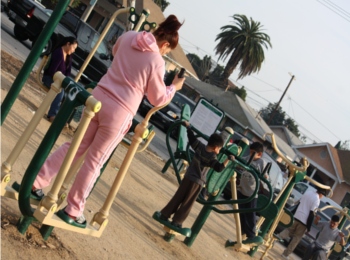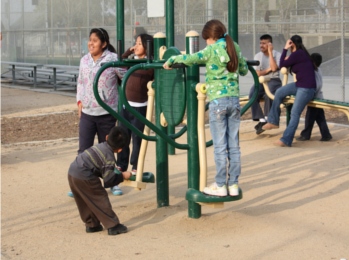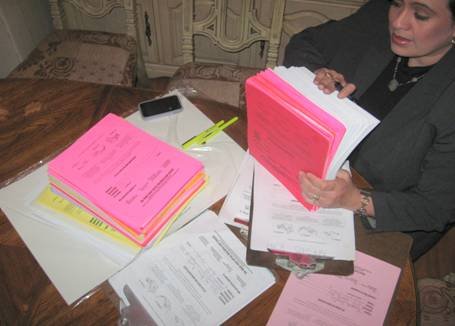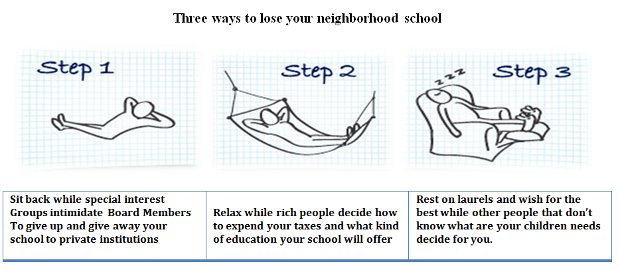By Jose Lara, a teacher at Santee Education Complex
 This is the first in a series of videos that I will be producing bi-monthly. I hope to engage people in a dialogue surrounding social justice in education and community organizing. Although I live and work in one of the most oppressed parts of Los Angeles, every day I am inspired by the resiliency of my community. Once we unite and become organized I know that there is nothing that can stop our demand for justice! This is our struggle. I hope this can begin the dialogue.
This is the first in a series of videos that I will be producing bi-monthly. I hope to engage people in a dialogue surrounding social justice in education and community organizing. Although I live and work in one of the most oppressed parts of Los Angeles, every day I am inspired by the resiliency of my community. Once we unite and become organized I know that there is nothing that can stop our demand for justice! This is our struggle. I hope this can begin the dialogue.
Videos are produced with a low-cost hand held digital video camera and incorporate the perspective of other LAUSD teachers, as well as South L.A. students, parents and community activists. Using YouTube, Facebook and Twitter to spread the message, these video blogs will bring to the fore ideas and initiate discussions that the South L.A. community needs to have. To view the video blog steam, please visit Jose Lara’s author page.
Become a fan of Jose Lara on Facebook or follow him on Twitter.
More from Jose Lara: Teachers gather at candlelight vigil









 On a clear morning, Esthela Jimenez brought her family to the park.
On a clear morning, Esthela Jimenez brought her family to the park.  From their inception, these zones have made a splash in the community.
From their inception, these zones have made a splash in the community. One of the effects to which Goran referred is a decrease in the obesity rates in the area.
One of the effects to which Goran referred is a decrease in the obesity rates in the area. Seven residents of Los Angeles felt the same way and wanted to discuss the city’s new identity. Writers, politicians, professors, historians and lawyers gathered for a panel called “Thinking About Now in Los Angeles” on Thursday evening.
Seven residents of Los Angeles felt the same way and wanted to discuss the city’s new identity. Writers, politicians, professors, historians and lawyers gathered for a panel called “Thinking About Now in Los Angeles” on Thursday evening.  is collecting signatures to put the initiative on the November 2010 ballot.
is collecting signatures to put the initiative on the November 2010 ballot.  Sociologists have highlighted a worrying trend in young, middle-class Americans, which many attribute simply to a upsurge in “optimism.” They have “much higher material expectations than previous generations,” writes Peck, after being told by their parents that they are “special,” can do anything they want and be anyone they want to be. This also makes it harder for “Generation Y” (as they have been termed) to cope with the qualities required by today’s job market, including “perseverance, adaptability, humility and entrepreneurialsm.” These young people, apparently, are likely to turn down jobs that they don’t feel are good enough, even if they have no other options.
Sociologists have highlighted a worrying trend in young, middle-class Americans, which many attribute simply to a upsurge in “optimism.” They have “much higher material expectations than previous generations,” writes Peck, after being told by their parents that they are “special,” can do anything they want and be anyone they want to be. This also makes it harder for “Generation Y” (as they have been termed) to cope with the qualities required by today’s job market, including “perseverance, adaptability, humility and entrepreneurialsm.” These young people, apparently, are likely to turn down jobs that they don’t feel are good enough, even if they have no other options.  Twenty-Eighth Street Elementary School is one of the most overcrowded schools in the LAUSD. The school was built in 1800s to accommodate a maximum of 800 students. In 2003, it housed over 2,300 students turning the school calendar in to a
Twenty-Eighth Street Elementary School is one of the most overcrowded schools in the LAUSD. The school was built in 1800s to accommodate a maximum of 800 students. In 2003, it housed over 2,300 students turning the school calendar in to a  Therefore we decided to organize a grass-roots effort to involve most of parents at 28th St. School. On January 22, 2010, I began a campaign to organize and obtain the authentic opinion and desires from parents about who they want to control school site #18.
Therefore we decided to organize a grass-roots effort to involve most of parents at 28th St. School. On January 22, 2010, I began a campaign to organize and obtain the authentic opinion and desires from parents about who they want to control school site #18. 








